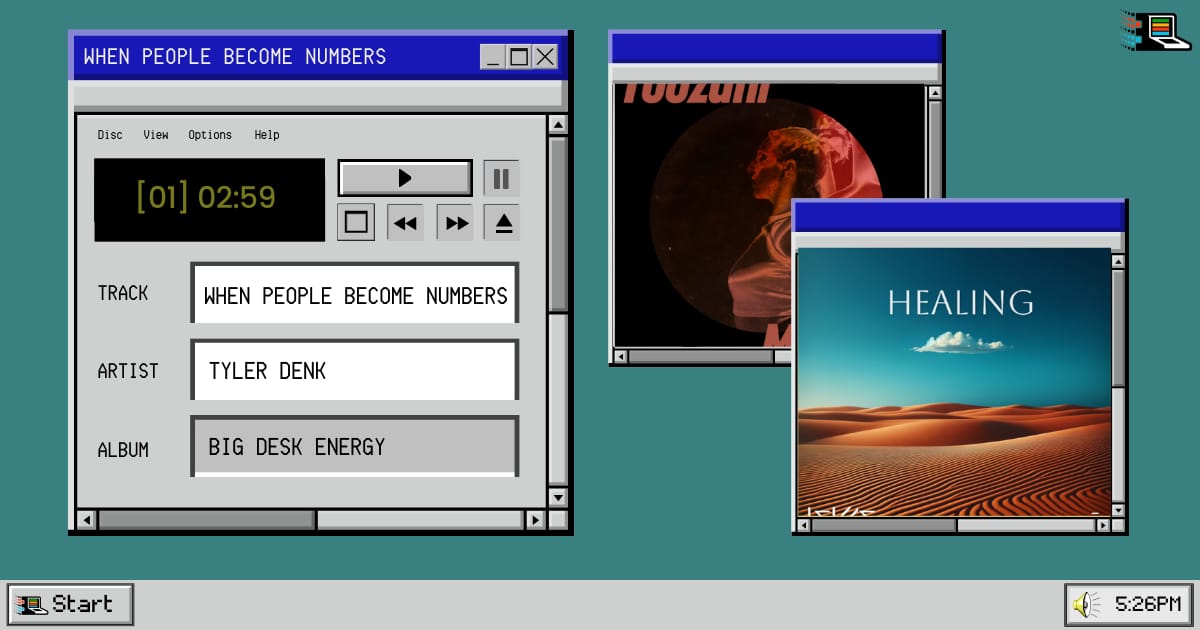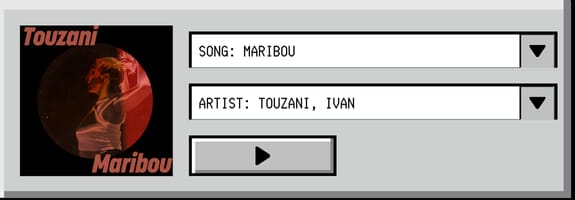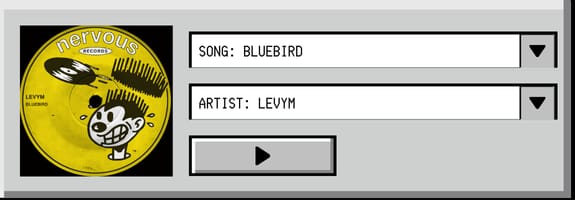
I vividly remember onboarding our first ever customer. I think we had just added the ability to send emails a week prior (for some reason we chose to do that last).
Of course we had a few early beta testers dishing us feedback while we were building, but this was the first real potentially paying customer. Reid Hoffman famously quoted “if you are not embarrassed by the first version of your product, you’ve launched too late.” And while I totally resonate and embody that philosophy… there’s something extremely uneasy about trying to get that very first user to pay you.
I found this in the archives from August 2021:
I remember doing a screenshare, walking them through the onboarding step by step, watching their every click. I’d voluntarily blurt out some of the shortcomings and share what we were building to address them… along with some of the broad ambitions we had for the product.
The entire time I’m second guessing whether or not they’re actually going to pull out their credit card at the end and pay. Thankfully they do; onboarding was a success.
We had 1 customer.
I told them to give me a text or call anytime they ever needed anything… and they certainly did. They’d text me about bugs, email me feature requests, and call me anytime something broke (happened once or twice in those early days).
They had my full attention. Hell — they were our only customer; 100% of our revenue. If they wanted something, they got it.
It’s cliché for founders to talk about “wearing multiple hats” but that’s exactly what it was for me back in those days:
Engineering: ~75% of my time was still spent coding and building new features.
Marketing: Creating content, writing blogs, posting on socials, trying to create some buzz anyway I could.
Sales: Outreach and intros, qualifying leads (any who had a pulse was a qualified lead in my book), and demos.
Onboarding: I’d build custom integrations, manually copy and paste their content over, and literally anything else to get them from point A to point Bee.
Customer Support: Questions, bugs, feature requests? Ya boy was holding down the support lines 24/7.
I did some Twitter sleuthing while writing this post and it’s kinda cool to find these tweets from when I was going through it all in real-time.
We didn’t spend a dollar on paid acquisition until year two of the business. So back in those early days it was the scrappiest acquisition you could imagine. After a few weeks we clawed our way to about 10 paying customers.
All of them got the same VIP treatment as the first. I personally onboarded them, gave them my phone number, and tended to their every need. If one of those users signaled the slightest level of dissatisfaction, I’d drop everything to appease them.
I couldn’t possibly let one of these customers churn; that’d be 10% of our total revenue. I’d fight tooth and nail to keep them.
A few months prior to launch, I actually teased what we were building with this tweet:
I only had a few thousand followers back then, but somehow had nearly 400 people join the waitlist for this new unproven platform. Here’s a follow up I posted the next day:
After we officially launched in November, I reached out to all 400 people one by one with a custom message. And when they didn’t respond, I would follow up a couple days later with my own manual drip campaigns. All from Gmail like a total lunatic.
No CRM, no automations, no reminders. Just me going through every sent email in my Gmail inbox and seeing where the conversation left off, then following up again.
We brute forced our way to 100 customers.
By then, we were still a small team of 4 engineers with a seemingly never-ending roadmap ahead of us. I was still spending about half of my time coding and building new features… but I was also doing the demos, onboarding, and customer support for these 100 customers.
This is likely around the time I completely lost my sanity (and still haven’t found it tbh).
💡 Note: customer support absolutely blows when the product is super nascent and doesn’t work all the time.
If one of those customers became a churn risk, I’d have to make a calculated decision. Obviously I didn’t want them to churn — we had worked so hard to win them over and I had likely already sunk a handful of hours into the migration and the on-going support.
But this user churning only represented 1% of our revenue now. I’m running on fumes, trying to launch new features, trying to onboard bigger and better customers… should I really drop everything to save 1% of our revenue?
Because I’m a psychopath, the answer was probably "yes.” But it was a much more difficult “yes” to justify relative to just a month earlier when that same user represented 10% of our revenue.
Fast forward to the spring and we had about 1,000 paying customers. We finally shifted our customer support to Zendesk, so it was organized, but I was still holding down the support effort solo. Every now and then someone would submit a ticket about exporting data (i.e. churning).
Obviously seeing someone churn is absolutely crushing as a founder (it still stings to see anyone downgrade today). I’d ask a few questions to try and extract the reasoning behind the decision and if there was anything I could do to make them reconsider.
But there’s only so much I could do. Plus, they only represented 0.1% of our revenue. It’d be impossible to retain everyone anyway.
A few months prior and I probably would have flown to their house, taken them out to dinner, and wrote their newsletter for them myself to keep them as a customer. But at 0.1% of our revenue? Nope, there’s unfortunately just too many other things that need to get done.
And before long, you begin to see the problem when people become numbers. What used to be a deeply personal relationship becomes abstracted to a few decimal points on a dashboard somewhere.
That’s just the cost of scaling. But about 6 months ago we totally revamped our downgrade flow to accomplish a few things:
Add a bit of friction to ensure the user fully understands what they’re losing by downgrading.
Collect information about why they’re leaving so we can use that to improve the platform and prevent future churn.
Offer one last ditch effort to have them remain on the platform.
Straight up, I will drop everything and hop on a call right then and there to win back someone from churning. (Note: not everyone sees that option obviously). But for those who don’t qualify for the “speak to the CEO” option, there are other high-touch off ramps to chat with a CSM, Growth Specialist, or Solutions Engineer… pending what issue they provided for wanting to leave.
We also follow up with a custom email to each user who churns to open up another direct line of communication. I’m Cc’d on that email and try to reply within minutes of anyone who responds.
We’ve won back hundreds of users with this flow.
It’s a privilege to be able to look at growth and churn represented as percentages, but it’s also important to remember what got you there. Behind each of those numbers is a person, and finding ways to connect with them like they represent 100% of your revenue will always be a winning strategy.
If you enjoyed this post or know someone who may find it useful, please share it with them and encourage them to subscribe: mail.bigdeskenergy.com/p/when-people-become-numbers
I had the most absurdly productive day yesterday:
I uploaded some customer metadata into ChatGPT
Performed a ton of data analysis
Extracted key insights
Built and launched a brand new marketing strategy
THIS ONLY TOOK 20 MINUTES!
If that sounds foreign to you, no need to sweat. HubSpot created the ultimate guide on how to use ChatGPT at work. I’ve read dozens of resources; this one is the gold standard.
…and it’s entirely free to download.
The guide includes 100 actionable prompts that you can begin using immediately. I legitimately use many of these almost every single day.


Credit: me
I don’t want to pat myself on the back too hard but this is probably one of the top submissions to date. Floor to ceiling windows, ocean views, modern spacious interior… and a fucking private island around the way.
Think you can generate a better office? Reply with your submissions 📨.
Reply with your own AI generated office and I’ll feature it in an upcoming issue.

Turn on, tune in, drop out. Click on any of the tracks below to get in a groove — each selected from the full Big Desk Energy playlist.

Some of my favorite content I found on the internet this week…
From stylist to star and all the professionals in between, here’s how much money everyone in Hollywood makes (The Hollywood Reporter)
Just a few years ago I was having a very weird night at Watergate, and now it’s shutting down for good with a bunch of other Berlin clubs (The Times)
Substack bet on politics and Elon tried to acquire them (NYT)
Kalshi paid influencers to target Polymarket CEO and suddenly I feel like beehiiv’s acquisition strategies are super soft (Pirate Wires)

Share this newsletter with your friends, or use it as a pickup line.
1 REFERRAL = $10 OFF ANYTHING IN THE STORE
Your referral count: {{rp_num_referrals}}
Or share your personal link with others: {{rp_refer_url_no_params}}

What'd you think of this email?
Enjoyed this newsletter? Forward it to a friend and have them signup here.
Until next Tuesday 🕺🏽
📥 Want to advertise in Big Desk Energy? Learn More











